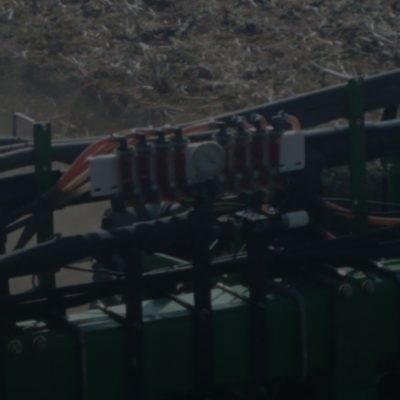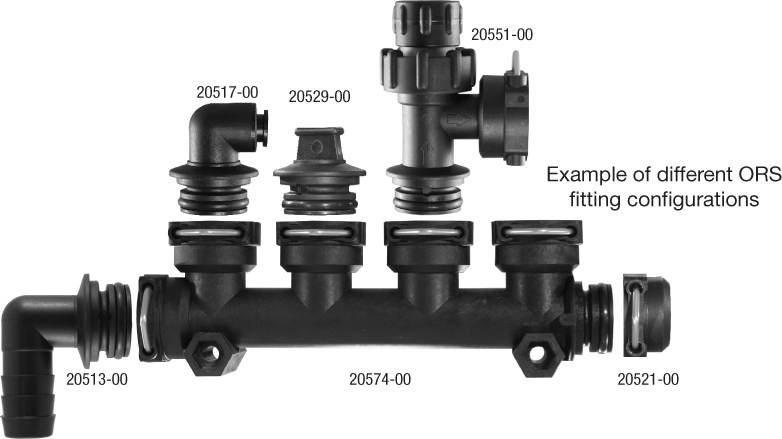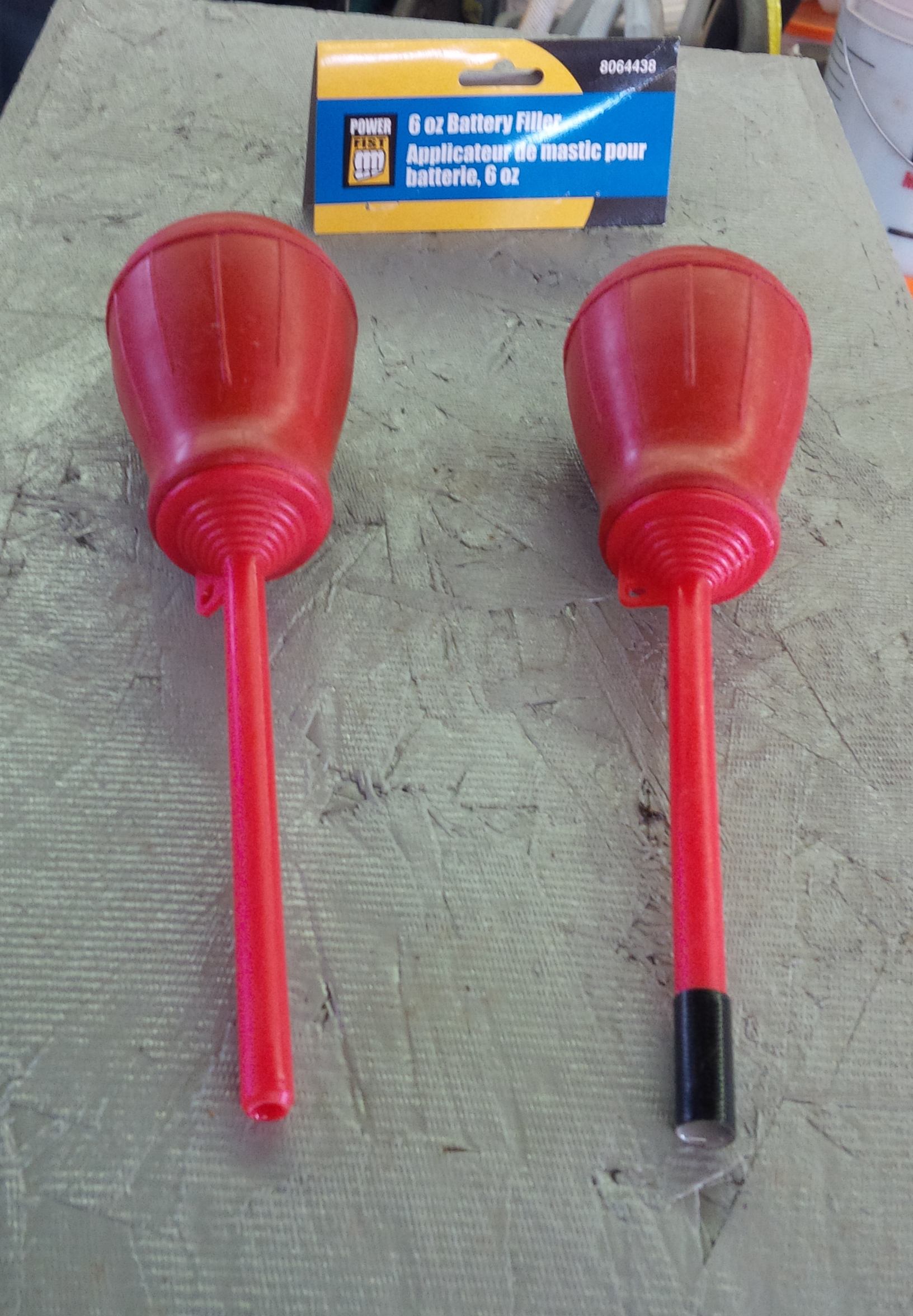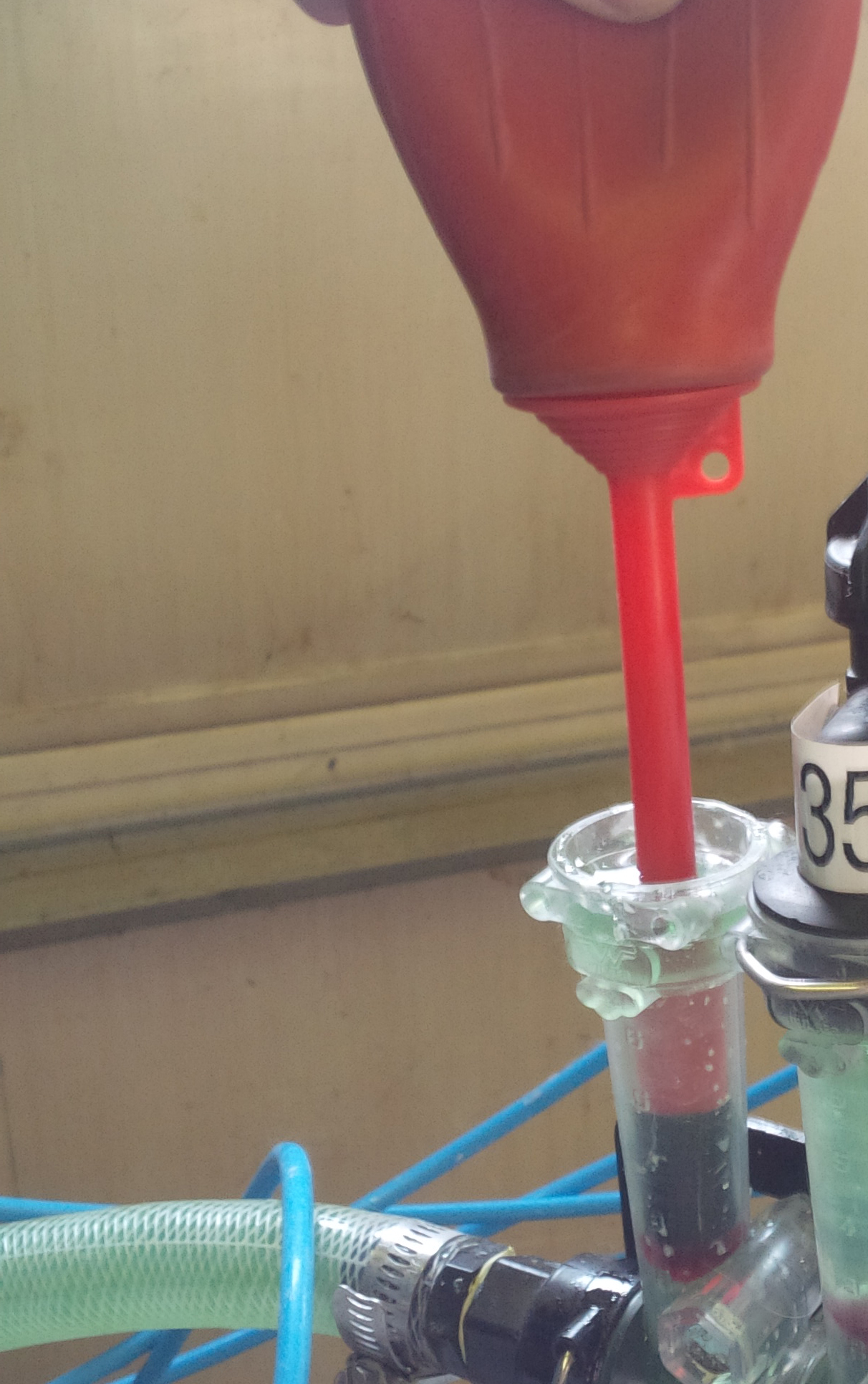Are you planting “In the Dark”?
Wilger Visual Ball Flow Indicators are a simple flow indicator, but when you encounter dark (or even BLACK) liquids, it can be tougher to use them.
There are some tips and tricks we can provide to help you stay productive, regardless of what color your liquid.
Who are common "Dark Liquid Culprits"?
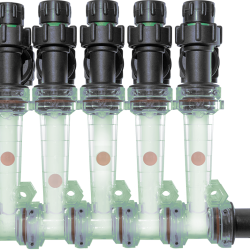
Dark (or White) Additives
Usually dark colored additives or inoculants are diluted with other liquids, but with the diverse farming regimens and planting diversity, we’ve seen everything from the whitest milk to darkest dark.
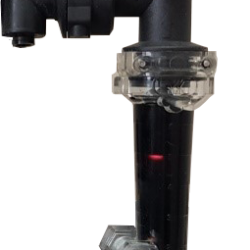
Humic Acids (6%/12%/24%)
Typically Humic acid mix components are used at 6% or 12%, but even up to 24% concentrations are available, which come as thick and as black as can be. Darker than a cup of coffee, and runs like sap, it can be a troublesome culprit to making most balls virtually invisible in the flow column.
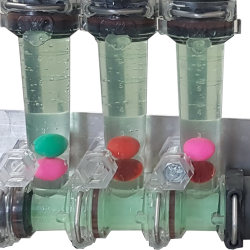
Colored Liquid Fertilizers & Starters
Many fertilizers on the market have predominant colors, most of which are fairly light in color (e.g. Green G22 by Alpine); however, there are some newer fertilizers (e.g. Paralign by West Central) that are even blood red in color, which makes it difficult to see with standard colored balls.
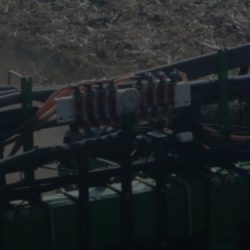
[Literally] Planting in the Dark
For some planting applications, once planting begins, you may be starting well ahead of the sun coming up, and stopping well after the sun going down. If it is hard to see, it is literally hard to see.
Tips to get you "Out of the Dark"
While different equipment and application requirements vary greatly, there are a handful of tricks that can be used to get better use of your visual flow indicators.
Diaphragm Check Valve & Shut-off Options for ORS Check Valve Bodies

Change your flow Indicator Ball Color
While the red ball is synonymous with visual flow indicators, balls of different weights come in many colors to try maintain visual flow indication.
Wilger makes a whole line of different colored balls. Some are available on our catalog, but if you have a specialty need that is not covered by existing ball options. As long as the colored balls used are functional for your product rate/density, you can freely swap them out.
For example: Humic Acid – use Bright Pink celcon Ball (#20460-14); Paralign Starter – Use White celcon ball (NEW FOR 2019 – #20460-18)
You can also use the new TIP WIZARD function to choose compatible flow indicator balls: HERE.
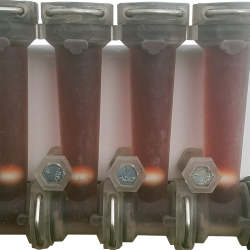
White Backboard or Background
To help with distinguishing the suspended ball against the background of the machine, using a sheet of puckboard (polyetheylene sheet) makes it a lot clearer for darker liquids, or on hard-to-see implements. Often LED lights (keep in mind corrosion/waterproofing factor) can be used to backlight a flow indicator to make the ball visible in darker conditions as well.
Video Feed
For remote viewing of flow indicator manifolds, another way to make a less-than-accessible flow indicator visible inside the cab is to have a video feed + light showing that columns.
Given the low price of video equipment, this can often be a good solution to planting at night, as well as for applicators who might be aging and having difficulty seeing.
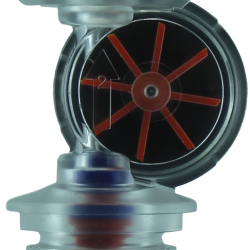
Electronic Flowmeter
If your application is still not co-operating with your flow indicators, we now have our Electronic Flow Monitoring System available. It can be retro-fitted onto your existing flow indicator, and show you a blockage monitor as well as the actual flow rate being applied through each outlet.
It would definitely be the next step up, having no issues with running in the dark. Feel free to read more information on the system and components on the EFM page.
Related News or Videos
As a pro-tip for assembling a flow indicator system, using a small amount of lubricant, such as liquid silicone on the o-ring when fitting any ORS components together makes it a breeze.
The clear plastic used to make all Wilger visual ball flow indicator columns is very special. It provides the greatest amount of chemical resistance, while maintaining the best clarity at the same time.
Over time, as with all plastic, it deteriorates in long term exposure to UV (such as the sun). To combat this and to extend the life of the flow indicator columns, Wilger uses a UV inhibitor, but to further extend the clarity of the plastic flow indicator columns, it is best to cover them up whenever in use.
Having a flow indicator column covered from UV will significantly increase the lifespan and clarity of the plastic.
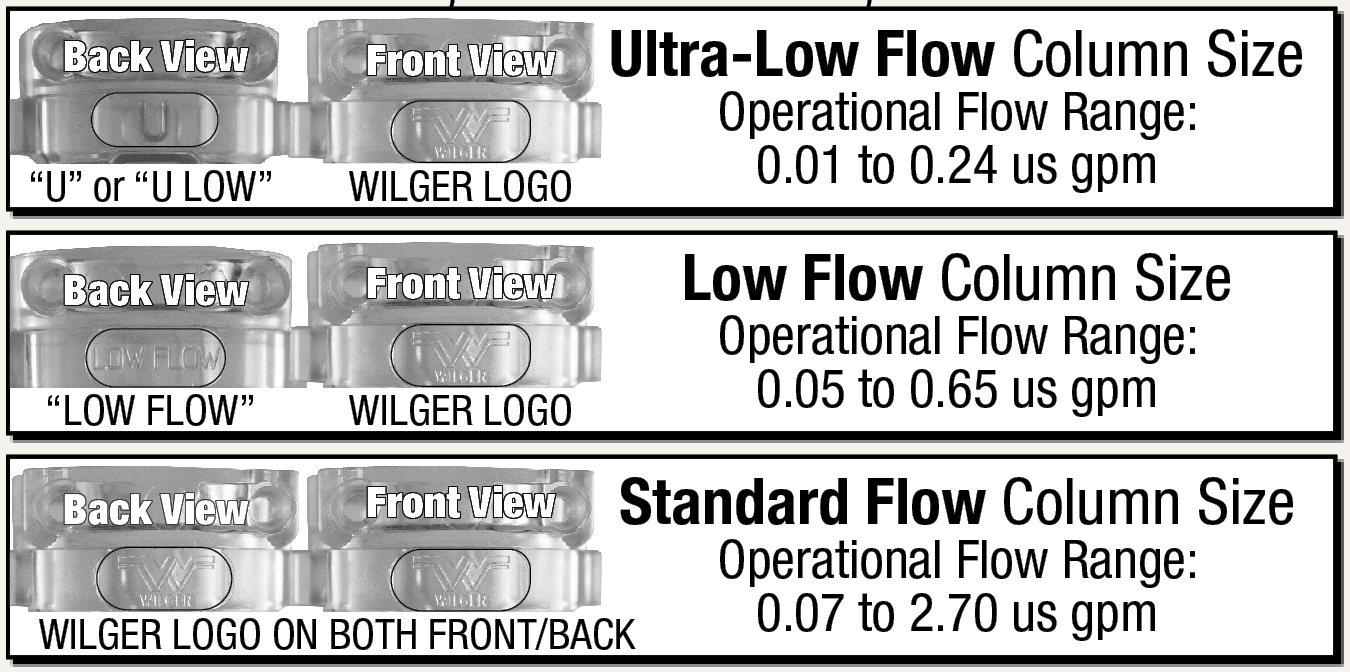
Since there are three different sized flow indicator columns to fit a number of applications, it is important to be able to tell them apart, as from a distance, they look very similar.
With a similar outward appearance, use the below as a guide to differentiate between them:
[Pictures to be added for visual representation]
STANDARD FLOW COLUMNS – On the flow indicator front and back, there is a small logo plate that has a WILGER logo. On the standard flow column, the WILGER logo is on the front and back of the column.
LOW FLOW COLUMNS – On the flow indicator front and back, there is a small logo plate that has a WILGER logo on one side, and a LOW FLOW label on the back side.
ULTRA LOW FLOW COLUMNS – The inside of the column for ultra low flow columns are considerably narrower than the other series of columns, and do not have a stepped interior wall inside the column.
A customer sent in a easy way to make a ball flow indicator ball remover.
It was simply made from a battery acid tester bulb, with a little bit of tape around the spout of the bulb.
Take a look at the pictures below as an example from our customer.






